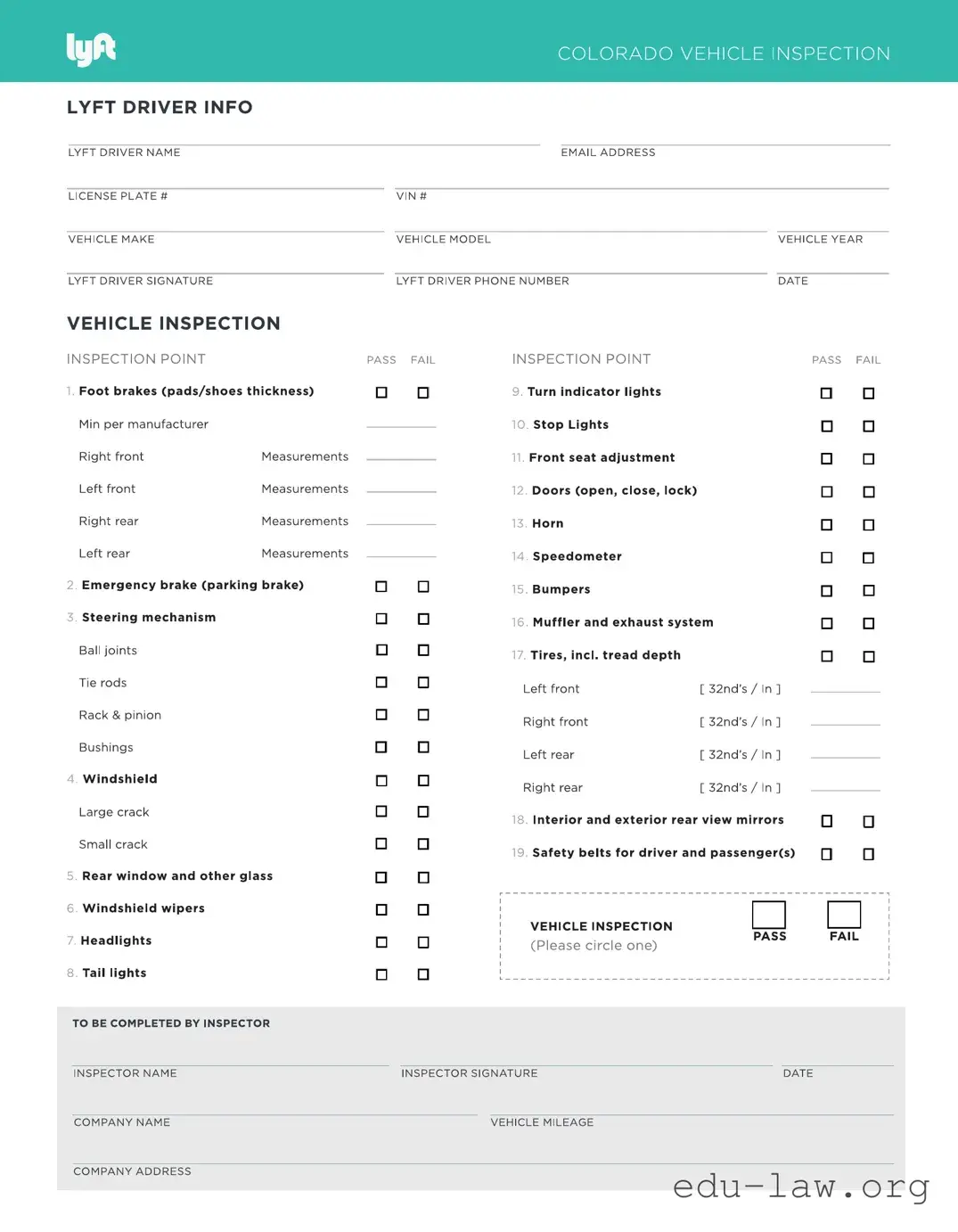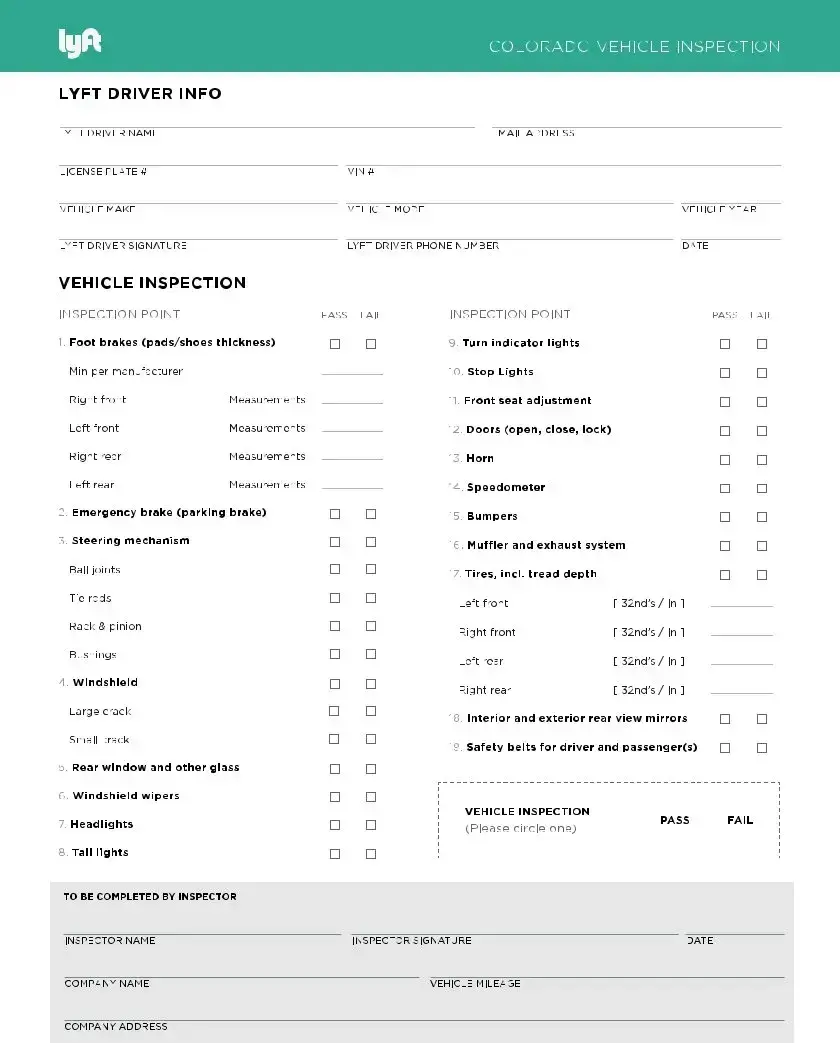Fill in Your Lyft Inspection Template
The Lyft Inspection form is a document that ensures vehicles meet safety and operational standards before they can operate on the Lyft platform. This inspection process plays a crucial role in maintaining the safety of both drivers and passengers. Understanding this form is essential for anyone looking to become a Lyft driver or for current drivers who need to comply with the requirements.

